Types of Vacuum Cleaners and Their Uses For Cleaning

A vacuum is one of the most necessary and efficient cleaning appliances. Vacuum cleaners come in many forms, shapes and sizes, with various functionalities, therefore make sure to do some research before buying a vacuum for your needs and budget. Visiting a vacuum store in your area is the best way to go about it because a vacuum shop specializes in (you guessed it) - vacuum cleaners and they know the ins and outs of the vacuums they sell. You'll also be supporting local small businesses and the community.
There is no household in the US without a vacuum cleaner. It is because of its utility and various properties that everyone likes to have one when cleaning their home or office. Choosing the most suitable vacuum cleaner can become a difficult task, but it doesn't have to be. For starters, learn more about the main vacuum types so you can familiarize yourself with them and make a better choice:
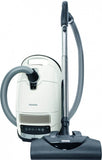
 These vacuum cleaners are perhaps the most popular and sought-after forms of cleaning equipment. When you see an ad on TV, you'll usually see an upright vacuum pictured, like the Dyson upright commercials for example. Upright vacuum cleaners have a traditional and popular design: the motor and the suction head are built in the same unit, that the user has to push when cleaning. On average, uprights tend to be slightly cheaper than canisters. They are efficient when cleaning thick carpets and rugs because of the motorized brushes. Just like a canister powerhead, you can transition from bare floor to carpet by changing the floor height adjustment with your foot or hand depending on the model. The storage is easy, as there are no accessories to disassemble and put away. Uprights usually have a wider cleaning path than a canister power head, but this depends on the model of canister we're speaking about because some Miele canisters have a pretty wide cleaning path, too. Uprights are usually noisier and heavier than canisters. They can also be difficult to carry up or down the stairs if you live in a multi-level house and if you have back pain. They are usually less effective in cleaning hard to reach areas as most uprights don't have a very long hose and many of them don't come with extra accessories to facilitate the cleaning of those areas. Uprights are pretty easy to understand how to use and most American households have used an upright vacuum at least once. Some uprights can be used for bare floors only and others can be used for both carpets and bare floors. Upright vacuum cleaners can be with or without a bag and can have a HEPA or a regular filtration system, based on which the price will also differ from model to model. You can also choose between regular or lightweight uprights that can weigh as little as 8 pounds (such as the Riccar Lightweight Uprights).
These vacuum cleaners are perhaps the most popular and sought-after forms of cleaning equipment. When you see an ad on TV, you'll usually see an upright vacuum pictured, like the Dyson upright commercials for example. Upright vacuum cleaners have a traditional and popular design: the motor and the suction head are built in the same unit, that the user has to push when cleaning. On average, uprights tend to be slightly cheaper than canisters. They are efficient when cleaning thick carpets and rugs because of the motorized brushes. Just like a canister powerhead, you can transition from bare floor to carpet by changing the floor height adjustment with your foot or hand depending on the model. The storage is easy, as there are no accessories to disassemble and put away. Uprights usually have a wider cleaning path than a canister power head, but this depends on the model of canister we're speaking about because some Miele canisters have a pretty wide cleaning path, too. Uprights are usually noisier and heavier than canisters. They can also be difficult to carry up or down the stairs if you live in a multi-level house and if you have back pain. They are usually less effective in cleaning hard to reach areas as most uprights don't have a very long hose and many of them don't come with extra accessories to facilitate the cleaning of those areas. Uprights are pretty easy to understand how to use and most American households have used an upright vacuum at least once. Some uprights can be used for bare floors only and others can be used for both carpets and bare floors. Upright vacuum cleaners can be with or without a bag and can have a HEPA or a regular filtration system, based on which the price will also differ from model to model. You can also choose between regular or lightweight uprights that can weigh as little as 8 pounds (such as the Riccar Lightweight Uprights).
A Backpack vacuum is named this way because you can literally wear it on your back (like a backpack) and a shoulder vacuum is carried on your shoulder like a ladies handbag. These vacuums are
fairly light and easy to carry around. These are the two types of vacuums widely used by commercial cleaners who have to clean thousands of square feet a day on multiple levels with stairs. These two types of vacuums are also considered as canisters. You may be wondering why you would choose a backpack vacuum cleaner over a canister. The difference is that most backpack and shoulder vacuums do not have an option for an electric powerhead making them unsuitable for high pile carpet cleaning and will mainly be used for bare floors, tiles and low pile carpets and rugs. Some Proteam backpacks however, do offer a motorized head feature. Most backpacks and shoulder vacuums have an ergonomic design and are made for commercial use where in the business world, time is money.
 Just like canisters, backpack and shoulder vacuums have a long hose with a wand that can be extended if needed and various tools and accessories are included that can be attached to the wand during the cleaning process and make it easier to clean hard to reach areas. On average they cost more than uprights or canisters and are better suited for commercial and industrial cleaning. Also, remember that backpack vacuums are not shop vacs or wet & dry vacuums. They may look similar but they are for dry work only. Some shoulder vacuums such as Riccar Supraquik also have a leaf blower feature that can be used to blow away leaves and other small debris. It may not be as powerful as a regular leaf blower, but it does a pretty good job.
Just like canisters, backpack and shoulder vacuums have a long hose with a wand that can be extended if needed and various tools and accessories are included that can be attached to the wand during the cleaning process and make it easier to clean hard to reach areas. On average they cost more than uprights or canisters and are better suited for commercial and industrial cleaning. Also, remember that backpack vacuums are not shop vacs or wet & dry vacuums. They may look similar but they are for dry work only. Some shoulder vacuums such as Riccar Supraquik also have a leaf blower feature that can be used to blow away leaves and other small debris. It may not be as powerful as a regular leaf blower, but it does a pretty good job.
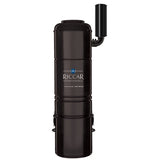 Central vacuums are also called built-in vacuums or ducted vacuum systems which have a wall or floor inlet valve for remotely connecting the hose to the main unit. If you would like to be able to vacuum your house quickly without dragging around a vacuum cleaner, consider installing a built-in central vacuum system. With a central vacuum, you just carry a lightweight vacuum hose and a wand with a cleaning head attached to it. When you plug the hose into a wall or floor inlet valve, the central vac turns on automatically. When you vacuum, the dust and debris go through the hose into a pipeline of PVC tubing. That pipeline runs through the entire house walls and/or floors to a large power unit canister (for dirt collection) typically installed in an out-of-sight-out-of-mind place such as the basement, garage, or utility room. With the main unit out of the way you also minimize the noise pollution while vacuuming. In addition to this, the fine dust particles don't go back into the air because of the enclosed system that a central vac is built with. A larger central vac unit can hold more dirt and debris than a regular vacuum, therefore it can be emptied 2-3 times a year. Before buying a central vacuum you must figure out if it's going to work for the layout of your home. Most central vacuum systems also have more-powerful motors than standard vacuums. Most houses need one or two central vac inlet valves on each level, located centrally and easily accessible. Central vacuums may not be right for everyone but if you think that it is right for you and if you’re remodeling your house and opening up the walls or building a new construction, this is probably the best time to install one of these vacuum systems. We recommend a 2 or 3 stage motor unit for higher efficiency. Riccar makes some of the best central vacuums on the market. They are made in the US with quality materials and designed to last a very long time.
Central vacuums are also called built-in vacuums or ducted vacuum systems which have a wall or floor inlet valve for remotely connecting the hose to the main unit. If you would like to be able to vacuum your house quickly without dragging around a vacuum cleaner, consider installing a built-in central vacuum system. With a central vacuum, you just carry a lightweight vacuum hose and a wand with a cleaning head attached to it. When you plug the hose into a wall or floor inlet valve, the central vac turns on automatically. When you vacuum, the dust and debris go through the hose into a pipeline of PVC tubing. That pipeline runs through the entire house walls and/or floors to a large power unit canister (for dirt collection) typically installed in an out-of-sight-out-of-mind place such as the basement, garage, or utility room. With the main unit out of the way you also minimize the noise pollution while vacuuming. In addition to this, the fine dust particles don't go back into the air because of the enclosed system that a central vac is built with. A larger central vac unit can hold more dirt and debris than a regular vacuum, therefore it can be emptied 2-3 times a year. Before buying a central vacuum you must figure out if it's going to work for the layout of your home. Most central vacuum systems also have more-powerful motors than standard vacuums. Most houses need one or two central vac inlet valves on each level, located centrally and easily accessible. Central vacuums may not be right for everyone but if you think that it is right for you and if you’re remodeling your house and opening up the walls or building a new construction, this is probably the best time to install one of these vacuum systems. We recommend a 2 or 3 stage motor unit for higher efficiency. Riccar makes some of the best central vacuums on the market. They are made in the US with quality materials and designed to last a very long time.Stick vacuums, like uprights, have slender, tall bodies and long handles with a built in powerhead. Many are battery-operated and some are corded. They are lightweight and convenient when you need to quickly clean up a mess. Most are fairly noisy and don't perform as well on carpet as full-size vacuums. They are mainly suited for picking up surface debris and aren't intended as a replacement for a regular full-size vacuum. The capacity of their dirt bin is typically small and it will need to be emptied more often. Stick vacs can also be bagged or bagless, so if you're allergic to dust, go for a stick vac that uses vacuum bags and a HEPA filter.
The handheld vacuums - these small models can be corded or cordless and can have a bag or be bagless. They're handy for light, quick surface cleaning on low-pile carpets and bare floors; some can be used for pet hair on upholstery and stairs. They're also useful for cleaning up your car's interior. They lack the power and capacity of a full-sized vacuum and are not designed to replace a conventional vacuum cleaner.
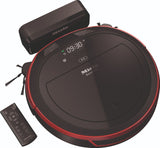 Robotic vacuums, also named robovacs, do the hard work while you relax or while you're out having fun. In order for it to perform well, the rooms will have to be decluttered. A robotic vacuum can touch up between regular vacuum cleaning sessions and is not designed to replace an ordinary full sized vacuum. The more technologically advanced robotic models such as Miele Scout RX2 can find their way out of tight spots and around extension cords. Some of the newest models can even be controlled by an app on your smartphone. As great as it sounds, no robotic vacuum can do the deep cleaning you'll get from a full sized upright or canister vacuum. If you have shag carpeting and area rugs, the robotic vacuums are not the ideal choice, because they can get tangled and stuck in the rug threads. Although this vacuum is battery operated, it will know to return to the docking station for charging when the battery is low and when you install the magnetic strips it will not go over them such as beyond the stairs or into a room that you don't want it to clean. Some robots are pretty low in height and can go under the furniture, which eliminates the need of you bending and reaching that area. If you have curious pets, it's best to keep them away from this vacuum as it can get chewed and sat on while in the working mode and eventually it can get damaged if not supervised, which can be pretty expensive to repair or replace. Robotic vacuums are a smart invention that save you valuable time therefore they're worth the money.
Robotic vacuums, also named robovacs, do the hard work while you relax or while you're out having fun. In order for it to perform well, the rooms will have to be decluttered. A robotic vacuum can touch up between regular vacuum cleaning sessions and is not designed to replace an ordinary full sized vacuum. The more technologically advanced robotic models such as Miele Scout RX2 can find their way out of tight spots and around extension cords. Some of the newest models can even be controlled by an app on your smartphone. As great as it sounds, no robotic vacuum can do the deep cleaning you'll get from a full sized upright or canister vacuum. If you have shag carpeting and area rugs, the robotic vacuums are not the ideal choice, because they can get tangled and stuck in the rug threads. Although this vacuum is battery operated, it will know to return to the docking station for charging when the battery is low and when you install the magnetic strips it will not go over them such as beyond the stairs or into a room that you don't want it to clean. Some robots are pretty low in height and can go under the furniture, which eliminates the need of you bending and reaching that area. If you have curious pets, it's best to keep them away from this vacuum as it can get chewed and sat on while in the working mode and eventually it can get damaged if not supervised, which can be pretty expensive to repair or replace. Robotic vacuums are a smart invention that save you valuable time therefore they're worth the money.
With so many vacuum cleaner choices on the market, you might still be in a dilemma, so you'll need to look for some additional features such as: a vacuum cleaner with a motorized brush cleans carpets better than one powered only by suction. A height adjustment powerhead and a brush deactivation switch will help protect the finish of hardwood floors and not scratch it. Also see if a bagged or bagless is best for you. Bagless vacuum cleaners save on the cost of vacuum bags but they also require more maintenance and filters that need periodic cleaning and replacement. Bagged vacuums are best for asthma and allergy sufferers because of the sealed system. Moreover, the dust and mess while emptying the dust bin of a bagless model can become a problem and trigger asthma and allergies in the people already suffering from it.
A reputable vacuum store will guide you to the right product by asking you questions related to your cleaning habits and your home environment. Most vacuum shops also repair vacuum cleaners and these experts can give you an idea about what vacuums they see more or less of for repairs, which is a very valuable insight when shopping for high quality cleaning equipment. You don't want to buy a vacuum every two years or less due to the poor quality materials and parts that break easily. They can also show you how the vacuums work and you will experience the cleaning performance right there at the vacuum shop helping to make your buying choice a breeze. Like everything else, quality may come with a price tag, however, you should consider that buying a vacuum cleaner is a long term investment in the well being of your family, home, pets and last but not least - your wallet.
- Tags: backpack vacuums built-in vacuum Canister Canister Vacuum Cleaner Canister Vacuums Carpet Cleaners carpet extractor carpet shampooer central vacuum Cirrus Vacuums Cordless Vacuum Handheld Vacuum Hoover Vacuums miele Miele repair fairfax Miele Repairs Miele Service Miele store Fairfax Miele store Vienna Miele vacuum repair Miele Vacuums miele warranty Robotic Vacuums robovacs Royal Vacuums Sebo Cleaners Shark Cleaners shoulder vacuums steam cleaner Stick Vacuum Upright Upright Vacuums Vacuum Cleaner Vacuum Repair Vacuum Shopping Vacuums
- Red Vacuums

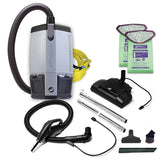
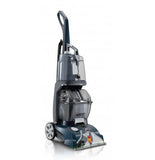
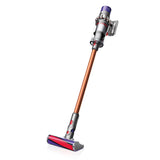
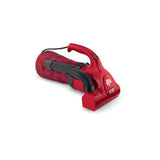

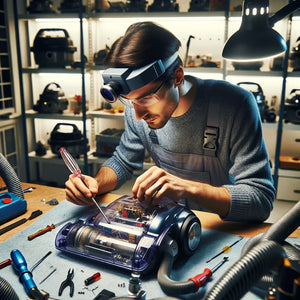
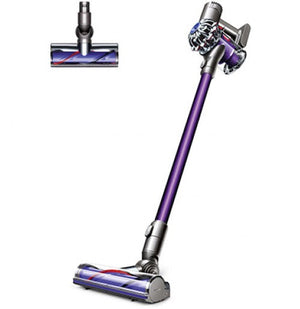
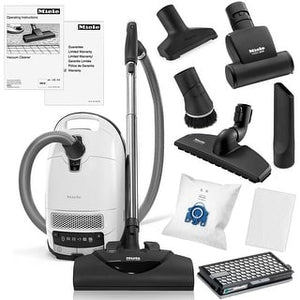

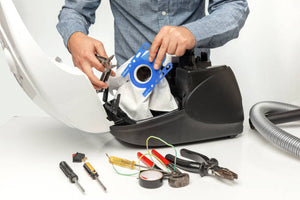
Comments 0